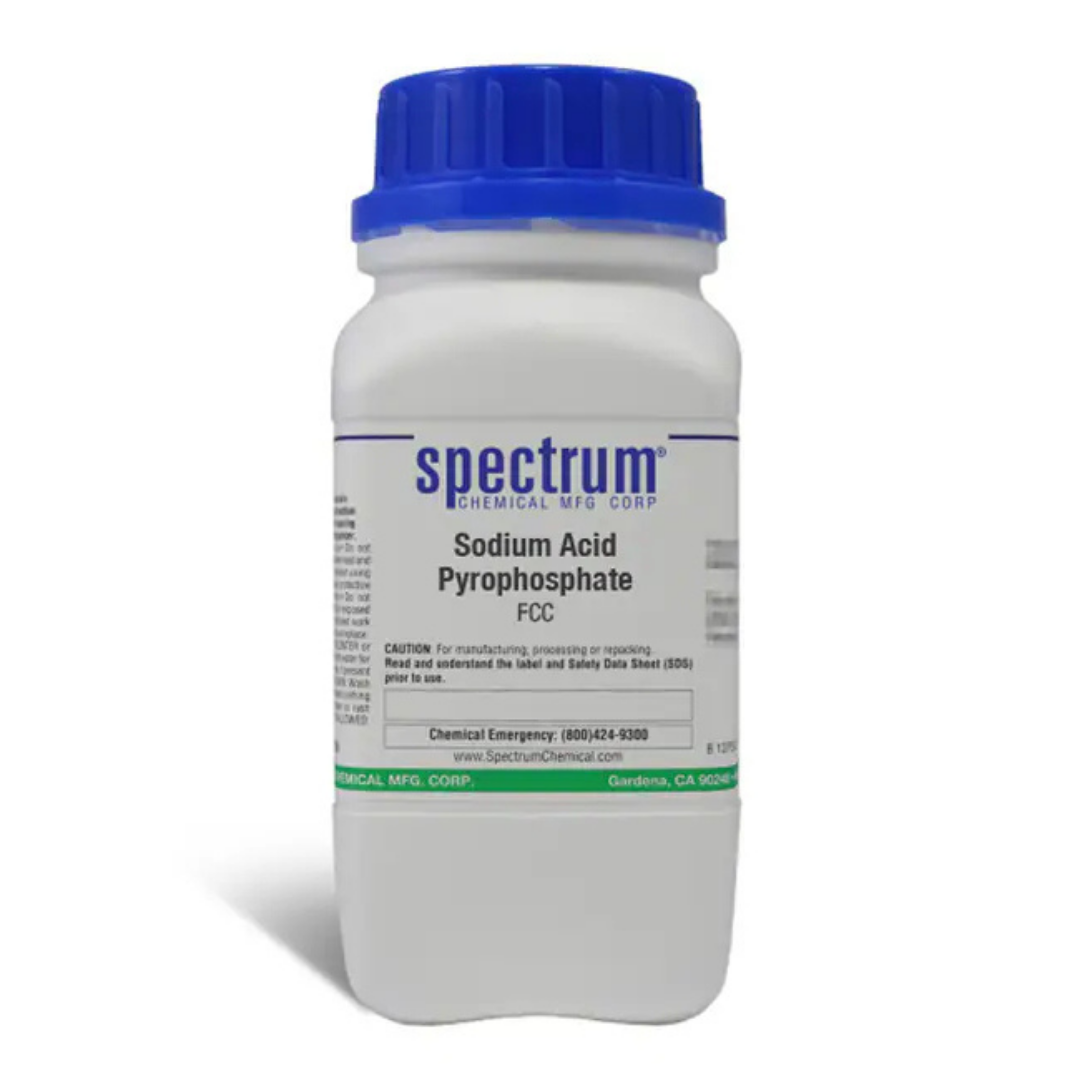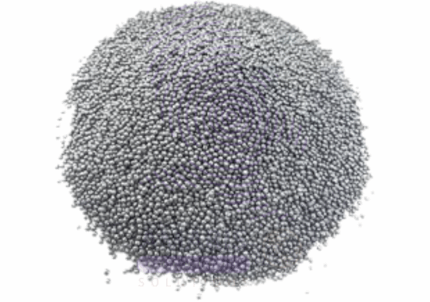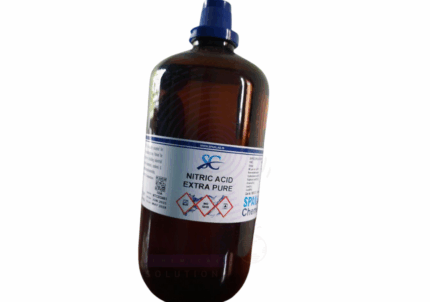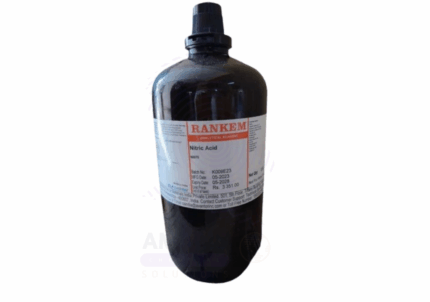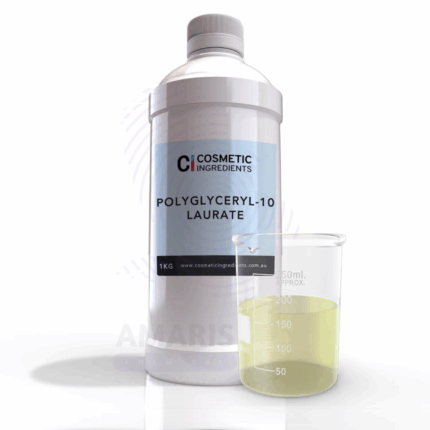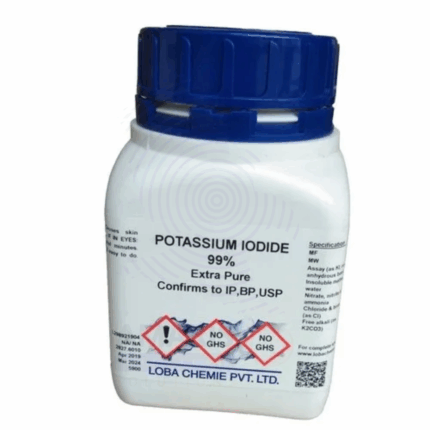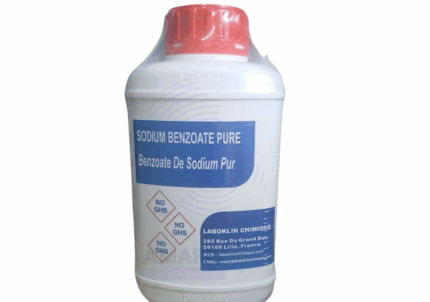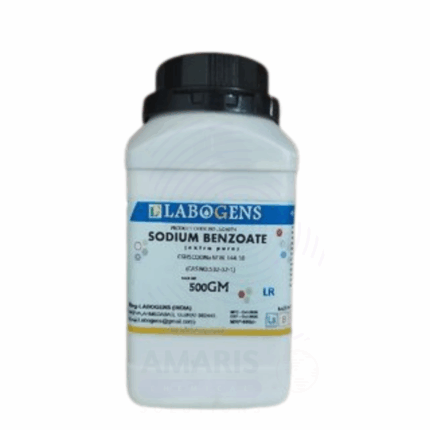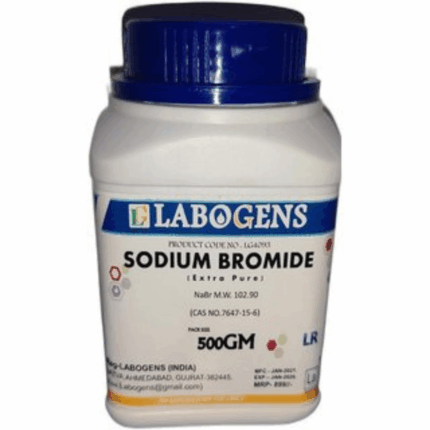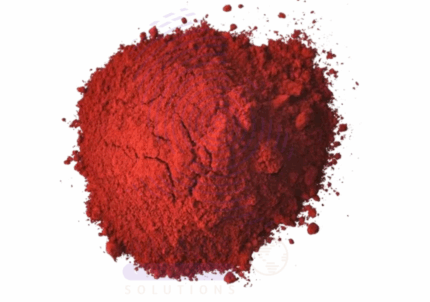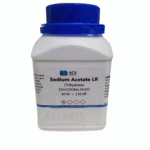
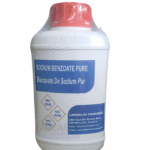
Sodium Acid Pyrophosphate Extra Pure
$ 18.00 Original price was: $ 18.00.$ 17.87Current price is: $ 17.87.
Sodium Acid Pyrophosphate Extra Pure is a high-quality, white granular or powdery inorganic chemical widely used as a leavening agent (E450), buffering agent, and sequestrant in food processing, laboratory applications, and chemical manufacturing. It maintains acidity, controls pH, and binds metal ions to improve stability and quality in various products. This compound is stable under normal conditions but should be stored dry and away from incompatible substances to preserve its purity and effectiveness. Handling precautions are essential to prevent irritation from dust exposure.
Sodium Acid Pyrophosphate Extra Pure
PRIMARY USES
- Analytical Reagent & Laboratory Applications:
- Used as a buffering agent in various chemical analyses and reactions.
- Acts as a sequestrant to bind metal ions in laboratory preparations.
- Utilized in biochemical assays requiring pH control and metal chelation.
- Food Industry:
- Functions as a leavening agent (E450) in baking powders and processed foods.
- Acts as an acidity regulator to maintain desired pH levels in food products.
- Serves as a sequestrant to prevent discoloration and texture changes by binding metal ions.
- Pharmaceutical & Cosmetic Industry:
- Used as a pH stabilizer and buffering agent in pharmaceutical formulations.
- Acts as a dispersing and stabilizing agent in cosmetics to maintain product consistency.
SECONDARY USES
- Chemical Manufacturing:
- Serves as a builder and water softener in detergent formulations.
- Used in textile industry for bleaching, dyeing, and improving fabric quality.
- Employed in ceramics and glass production to influence setting and melting characteristics.
- Water Treatment:
- Functions as a chelating agent to sequester calcium and magnesium ions in water softening processes.
1. Basic Identification Attributes
- Chemical Name: Sodium Acid Pyrophosphate
- CAS Number: 7758-16-9
- HS Code: 2836.40.00
- Molecular Formula: Na₂H₂P₂O₇
- Synonyms:
- Acid sodium pyrophosphate
- Sodium acid pyrophosphate
2. Physical & Chemical Properties
- Physical State: White granular or powder solid
- Color & Odor: White, odorless
- Melting Point: Decomposes at approximately 300 °C
- Density/Specific Gravity: Approximately 2.43 g/cm³
- Solubility:
- Soluble in water
- Insoluble in ethanol and ether
- pH Level: Acidic aqueous solution, typically between pH 3.5 and 4.5 (1% solution)
- Vapor Pressure & Volatility: Not volatile
- Flash Point: Not applicable (non-flammable)
- Autoignition Temperature: Not applicable
- Viscosity: Not applicable
3. Safety & Hazard Attributes
- Hazard Class (GHS Classification):
- Causes skin and eye irritation (Category 2)
- NFPA Ratings:
- Health: 2
- Flammability: 0
- Reactivity: 0
- Exposure Limits:
- No specific OSHA PEL or ACGIH TLV established
- Reactivity:
- Stable under normal conditions
- Reacts with strong bases and acids, releasing heat
4. Storage & Handling Attributes
- Storage Conditions:
- Store in a cool, dry, and well-ventilated area
- Keep container tightly closed to prevent moisture uptake and contamination
- Incompatible Materials:
- Strong bases and acids
- Moisture (hygroscopic, prone to caking)
- Container Type:
- Plastic, polyethylene, or sealed metal drums
- Shelf Life & Expiration Date:
- Stable for several years if stored under recommended conditions
- Special Handling Requirements:
- Use personal protective equipment including gloves, goggles, and dust mask
- Avoid inhaling dust and direct contact with skin or eyes
5. Regulatory & Compliance Attributes
- Regulatory Status:
- Approved as a food additive (E450) by FDA, EFSA, and other global agencies
- Listed in REACH, OSHA, and EPA chemical inventories
- Transportation Restrictions:
- Not classified as hazardous for transportation purposes
- Waste Disposal Method:
- Dispose of in accordance with local environmental regulations
- Classified as non-hazardous waste
6. Environmental & Health Impact
- Ecotoxicity:
- Exhibits low toxicity to aquatic organisms
- Persistence in Environment:
- Readily soluble and disperses easily in water
- Carcinogenicity/Mutagenicity:
- Not classified as carcinogenic or mutagenic
- Biodegradability:
- Inorganic compound; does not biodegrade but poses minimal environmental risk
SAFETY PRECAUTIONS
Personal Protective Equipment (PPE):
- Wear chemical-resistant gloves (e.g., nitrile or butyl rubber).
- Use safety goggles or a face shield to protect eyes.
- Wear lab coat or protective clothing.
- Use a suitable dust mask or respirator if airborne dust is present.
Handling:
- Handle only in well-ventilated areas.
- Avoid contact with skin, eyes, and clothing.
- Do not inhale dust.
- Wash hands thoroughly after handling.
Storage:
- Store in tightly sealed containers to prevent moisture absorption.
- Keep in a cool, dry, and well-ventilated location.
- Avoid contact with incompatible materials such as strong bases, acids, and moisture.
FIRST AID MEASURES
Inhalation:
- Move affected person to fresh air immediately.
- Seek medical attention if breathing difficulties occur.
Skin Contact:
- Rinse affected area thoroughly with soap and water.
- Remove contaminated clothing promptly.
- Seek medical advice if irritation persists.
Eye Contact:
- Rinse eyes immediately with plenty of water for at least 15 minutes.
- Hold eyelids open while rinsing.
- Seek immediate medical attention.
Ingestion:
- Rinse mouth with water.
- Do not induce vomiting unless directed by medical personnel.
- Seek medical attention if symptoms develop.
FIRE FIGHTING MEASURES
Flammability:
- Non-flammable solid.
Extinguishing Media:
- Use water spray, dry chemical, carbon dioxide (CO₂), or foam extinguishers.
Hazardous Combustion Products:
- May produce phosphorus oxides if strongly heated.
Firefighter Protection:
- Wear full protective gear and self-contained breathing apparatus (SCBA).
- Avoid inhaling fumes or combustion products.


 Preservatives(food)
Preservatives(food) Flavor Enhancers
Flavor Enhancers Acidulants
Acidulants Sweeteners
Sweeteners Antioxidants
Antioxidants Colorants(food)
Colorants(food) Nutraceutical Ingredients (food)
Nutraceutical Ingredients (food) Nutrient Supplements
Nutrient Supplements Emulsifiers
Emulsifiers
 Collectors
Collectors Dust Suppressants
Dust Suppressants Explosives and Blasting Agents
Explosives and Blasting Agents Flocculants and Coagulants
Flocculants and Coagulants Frothers
Frothers Leaching Agents
Leaching Agents pH Modifiers
pH Modifiers Precious Metal Extraction Agents
Precious Metal Extraction Agents
 Antioxidants(plastic)
Antioxidants(plastic) Colorants (Pigments, Dyes)
Colorants (Pigments, Dyes) Fillers and Reinforcements
Fillers and Reinforcements Flame Retardants
Flame Retardants Monomers
Monomers Plasticizers
Plasticizers Polymerization Initiators
Polymerization Initiators Stabilizers (UV, Heat)
Stabilizers (UV, Heat)
 Antifoaming Agents
Antifoaming Agents Chelating Agents
Chelating Agents Coagulants and Flocculants
Coagulants and Flocculants Corrosion Inhibitors
Corrosion Inhibitors Disinfectants and Biocides
Disinfectants and Biocides Oxidizing Agents
Oxidizing Agents pH Adjusters
pH Adjusters Scale Inhibitors( water)
Scale Inhibitors( water)
 Antioxidants(cosmetic)
Antioxidants(cosmetic) Emollients
Emollients Fragrances and Essential Oils
Fragrances and Essential Oils Humectants
Humectants Preservatives
Preservatives Surfactants(cosmetic)
Surfactants(cosmetic) Thickeners
Thickeners UV Filters
UV Filters
 Fertilizers
Fertilizers Soil Conditioners
Soil Conditioners Plant Growth Regulators
Plant Growth Regulators Animal Feed Additives
Animal Feed Additives Biostimulants
Biostimulants Pesticides (Herbicides, Insecticides, Fungicides)
Pesticides (Herbicides, Insecticides, Fungicides)
 Active Pharmaceutical Ingredients (APIs)
Active Pharmaceutical Ingredients (APIs) Excipients
Excipients Solvents(pharmaceutical)
Solvents(pharmaceutical) Antibiotics
Antibiotics Antiseptics and Disinfectants
Antiseptics and Disinfectants Vaccine Adjuvants
Vaccine Adjuvants Nutraceutical Ingredients (pharmaceutical)
Nutraceutical Ingredients (pharmaceutical) Analgesics & Antipyretics
Analgesics & Antipyretics
 Analytical Reagents
Analytical Reagents Solvents(lab)
Solvents(lab) Chromatography Chemicals
Chromatography Chemicals Spectroscopy Reagents
Spectroscopy Reagents microbiology-and-cell-culture-reagents
microbiology-and-cell-culture-reagents Molecular Biology Reagents
Molecular Biology Reagents Biochemical Reagents
Biochemical Reagents Inorganic and Organic Standards
Inorganic and Organic Standards Laboratory Safety Chemicals
Laboratory Safety Chemicals Specialty Laboratory Chemicals(Special Laboratory Equipment)
Specialty Laboratory Chemicals(Special Laboratory Equipment)
 Demulsifiers
Demulsifiers Hydraulic Fracturing Fluids
Hydraulic Fracturing Fluids Scale Inhibitors(oil)
Scale Inhibitors(oil) Surfactants(oil)
Surfactants(oil) Drilling Fluids
Drilling Fluids
 Dyes and Pigments
Dyes and Pigments Bleaching Agents
Bleaching Agents Softening Agents
Softening Agents Finishing Agents
Finishing Agents Antistatic Agents
Antistatic Agents
 Admixtures
Admixtures Waterproofing Agents
Waterproofing Agents Sealants and Adhesives
Sealants and Adhesives Curing Compounds
Curing Compounds Concrete Repair Chemicals
Concrete Repair Chemicals Anti-Corrosion Coatings
Anti-Corrosion Coatings
 Surfactants(cleaning)
Surfactants(cleaning) Builders
Builders Enzymes
Enzymes Solvents (Cleaning)
Solvents (Cleaning) Fragrances
Fragrances
 Electronic Chemicals
Electronic Chemicals Catalysts
Catalysts Lubricants
Lubricants Photographic Chemicals
Photographic Chemicals Refrigerants
Refrigerants Automotive chemicals
Automotive chemicals Pyrotechnic Chemicals
Pyrotechnic Chemicals
 Biodegradable Surfactants
Biodegradable Surfactants Bio-based Solvents
Bio-based Solvents Renewable Polymers
Renewable Polymers Carbon Capture Chemicals
Carbon Capture Chemicals Wastewater Treatment Chemicals
Wastewater Treatment Chemicals
 Pigments
Pigments Solvents(paint)
Solvents(paint) Specialty Coatings
Specialty Coatings Binders/Resins
Binders/Resins Additives
Additives Driers
Driers Anti-Corrosion Agents
Anti-Corrosion Agents Functional Coatings
Functional Coatings Application-Specific Coatings
Application-Specific Coatings
 Fresh Herbs
Fresh Herbs Ground Spices
Ground Spices Whole Spices
Whole Spices Spice Blends
Spice Blends Dried Herbs
Dried Herbs
 Leavening Agents
Leavening Agents Dough Conditioners
Dough Conditioners Flour Treatments
Flour Treatments Fat Replacers
Fat Replacers Decoratives
Decoratives Preservatives(baking)
Preservatives(baking)
 Plasticizers & Softeners
Plasticizers & Softeners Reinforcing Agents
Reinforcing Agents Adhesion Promoters
Adhesion Promoters Vulcanizing Agents
Vulcanizing Agents Antidegradants
Antidegradants Blowing Agents
Blowing Agents Fillers & Extenders
Fillers & Extenders Accelerators & Retarders
Accelerators & Retarders